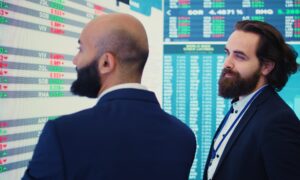Introduction
Forex trading and money laundering are two distinct but interconnected concepts. While Forex trading for beginners refers to the buying and selling of currencies on the foreign exchange market, money laundering on its part is a way of disguising the proceeds from illegal activities to become legitimate funds and avoid detection by anti-money laundering bodies.
Forex trading apparently can be used as a tool for money laundering because it involves the transfer of large amounts of money across international borders.
Criminals can use forex trading to convert their illicit funds into other currencies and move them around the world without raising suspicion. In this article, we will be exploring the different ways in which forex trading has been abused and used for money laundering.
What is money laundering?
Money laundering is a way of obscuring the source of illegal funds and making such funds appear legitimate. Often criminals tend to use a variety of methods to disguise the proceeds of their illegal activity and manipulate them to appear as legitimate funds to hide their criminal origin.
This process usually involves three different stages such as: Conversion, layering and adoption. In the conversion stage, the illegally obtained funds are launched into the financial system. In the layering stage, the money is moved around and separated from its criminal origins through a series of transactions, often involving multiple jurisdictions and financial institutions. Lastly, is the adoption stage, here the illegal funds are reintroduced into the economy and they now appear to be legitimate.
In what ways can forex trading be used for money laundering? The are several other ways in which forex trading could be used for money laundering today. For example, a criminal might use a forex broker to transfer funds from one country to another, using fluctuating exchange rates to obscure the origin and destination of the funds.
Alternatively, a criminal might use forex trading to make multiple small transactions, each below the reporting threshold for suspicious activity, to avoid detection.
Another common method in which forex trading is used for money laundering is through the use of shell companies. Criminals set up fake companies that appear to be legitimate, and then use these companies to move money around. They may use forex trading to transfer money between these shell companies, or to convert funds into different currencies to make it more difficult to trace their origins.
More so, forex trading can be used for money laundering through the use of offshore accounts. Criminals may set up accounts in offshore jurisdictions that have lax regulations around anti-money laundering (AML) measures. They can then use these accounts to conduct forex trades and move money around without attracting attention.
On another note, forex brokers also play a role in the potential for money laundering in the forex market. Some brokers may turn a blind eye to suspicious activity, or may even actively facilitate money laundering by allowing clients to conduct trades without proper identification or AML checks.
In response to these risks, regulators around the world have implemented AML measures to prevent money laundering in the forex market. These measures include requiring brokers to conduct proper AML checks on their clients, monitoring forex trades for suspicious activity, and reporting any suspicious transactions to the relevant authorities.
In conclusion, there is a clear connection between forex trading and money laundering. The forex market provides a convenient way for criminals to move and convert funds, making it an attractive target for those looking to launder money. However, with proper AML measures in place and the vigilance of traders, it is possible to prevent the misuse of the forex market for illegal activities.



































